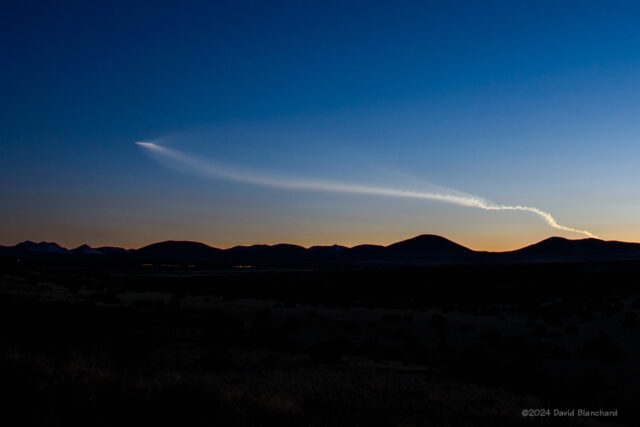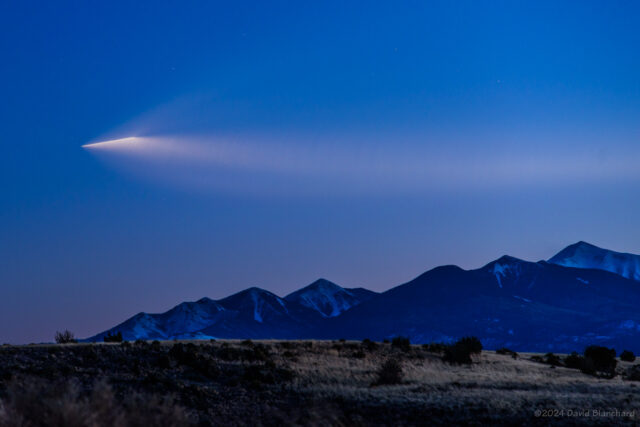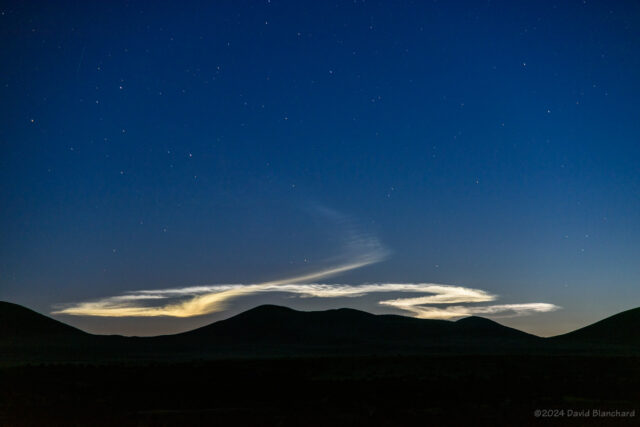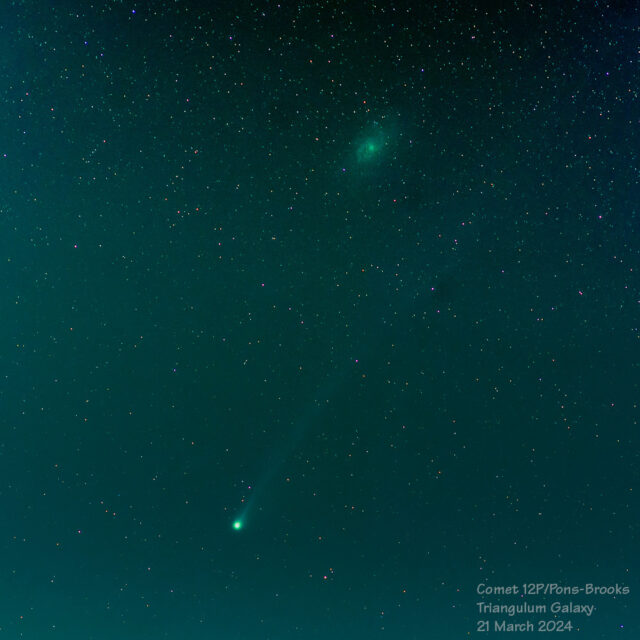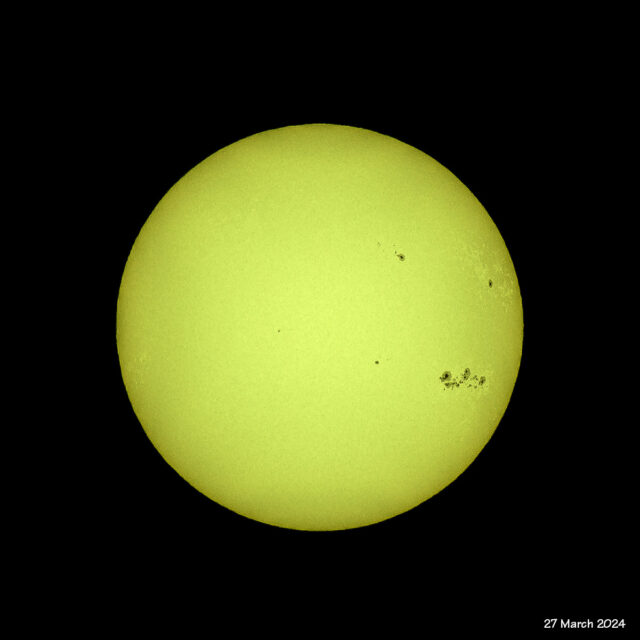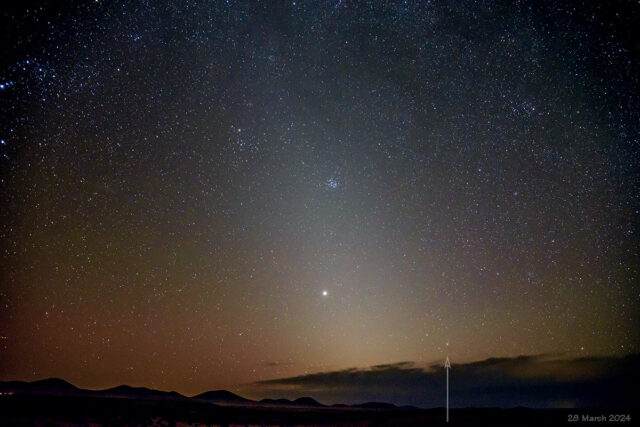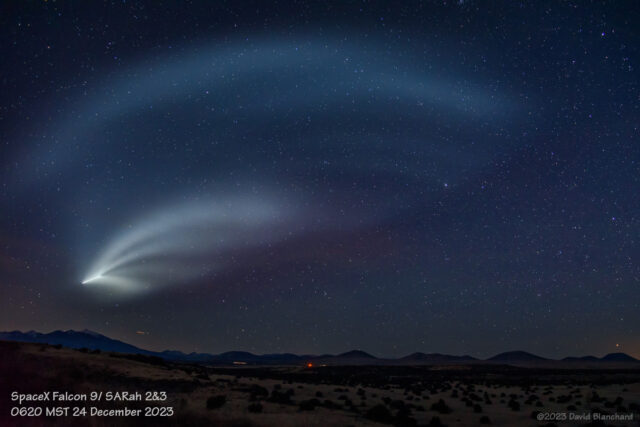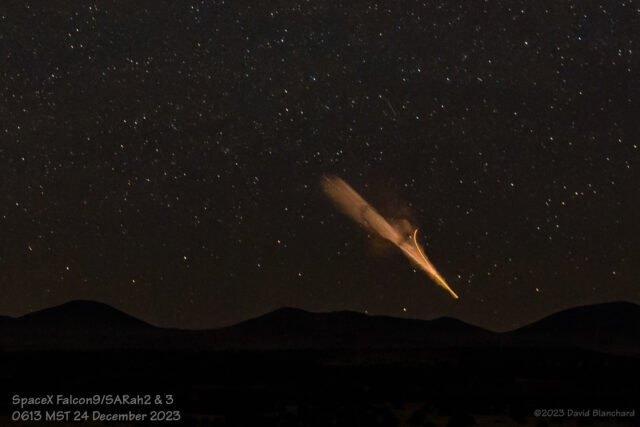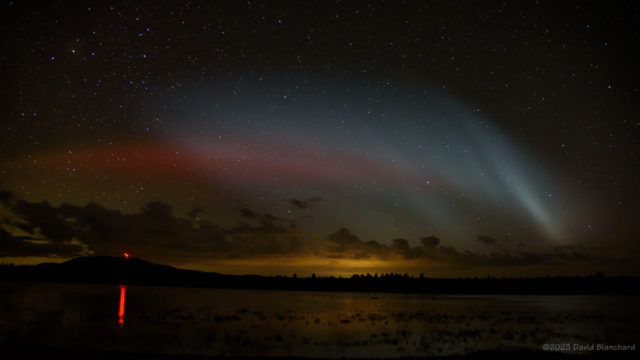
The 5th flight of a Firefly Alpha rocket was launched from Vandenberg Space Flight Base last week (03 July 2024). This was the first time I had observed a Firefly launch and was not certain what to expect. I started photographing the launch using a telephoto (80mm) but a few minutes into the flight I realized I needed a wide-angle lens (12mm) to fully capture the rapidly expanding rocket exhaust.

I manually tracked the flight and captured a few more images in which the 1st stage and fairings can be seen.



Using the wide angle lens I was able to capture a sequence of images suitable for time lapse, presented below.
Time lapse video of the Firefly Alpha rocket launch from Vandenberg SFB on 03 July 2024.
As noted above, I switched from a telephoto lens to wide angle lens a few minutes into the flight–thus the time lapse starts well after launch. Nonetheless, the rapidly expanding rocket exhaust shows up well. Also, there is a hole punched in the ionosphere causing it to glow red. This video was featured on Spaceweather.com and a description of the red glow was provided:
The lingering red glow is “the hole.” Earth’s ionosphere is a layer of electrically-conducting gas enveloping our planet more than 100 km high. It plays a key role in shortwave radio communications and GPS positioning. When Alpha burned through the ionosphere, water and carbon dioxide in therocket’s exhaust quenched local ionization by as much as 70%. Red light is the afterglow of this process.
It was spectacular to watch and photograph. As always, I look forward to additional launches from Vandenberg SFB.
